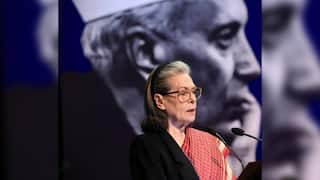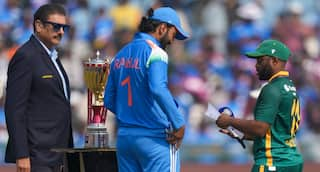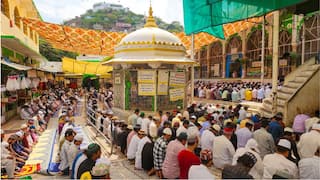Horoscope Matching For Different Cultures And Religions
Horoscope matching is a fascinating practice with deep-rooted cultural and religious significance in various parts of the world.

New Delhi (India), November 4: There are many different kinds of horoscope matching practised for different cultures and religions in Asia and in Western countries. Some of the most common include:
Vedic astrology (also known as Jyotish): This is the oldest form of astrology in Asia, and it is still widely practised in India and Nepal. Vedic astrologers use the couple's birth charts to assess their compatibility in terms of their personalities, goals, and values.
Chinese astrology (also known as BaZi), Korean astrology (also known as Sa Ju Pyeong), Japanese astrology (also known as Horoscope), and Thai astrology (also known as Somyot), are other astrology types followed in different parts of the world. All these astrologers are based on elements of wood, fire, earth, metal and water.
Pandit G R Shastri Ji, Founder of Sai Upasak Astrology, who is an expert in Vedic Astrology, said, “In addition to these general types of horoscope matching, there are also many specific systems that are used in different Asian cultures. For example, in India, a system called Ashtakoot Milan assesses couples' compatibility based on eight different factors. In China, a system called Zi Wei Dou Shu is used to predict the couple's compatibility in terms of their careers and financial prospects.”
Ashtakoot Milan is a Vedic astrology system for assessing the compatibility of couples based on eight different factors. In the realm of Vedic astrology, the compatibility of a couple's union is a multifaceted journey, intricately assessed through a series of key factors known as "Koots."
Each Koot examines specific aspects of the couple's compatibility, offering profound insights into their potential harmony and challenges.
Gana Koot delves into the couple's gunas, assessing their mental, emotional, and physical qualities to determine their innate compatibility. Vishesha Koot examines their Varga, evaluating their social status and reputation, seeking harmony in societal facets. Tara Koot explores the celestial realms, scrutinizing the compatibility of their horoscopes in terms of stars and planets, unveiling cosmic synergies.
Yoni Koot ventures into the realm of sexual compatibility, a vital component of a thriving relationship. Graha Maitri Koot studies the interplay of celestial bodies within their horoscopes, uncovering how planetary dynamics influence their connection. Bhakoot Koot pays attention to lunar nodes, revealing the influence of these nodes on their compatibility. Nadi Koot analyzes their blood circulation and nervous systems, investigating the physical and mental bond. Sadhe Sati Koot takes into account the impact of the Sade Sati period, a significant astrological phase, on the course of their marriage.
Each factor is assigned a score of 1 to 8, with 8 being the highest score. The total score for the couple is then calculated, and the higher the score, the more compatible the couple is said to be.
Ashtakoot Milan is a popular system of horoscope matching in India, and it is often used by families to assess the compatibility of potential marriage partners.
Gana Koot is based on the five gunas: sattva, rajas, and tamas. Sattva is associated with purity, goodness, and wisdom. Rajas are associated with activity, passion, and desire. Tamas is associated with inertia, darkness, and ignorance.
A couple with a high Gana Koot score is said to be compatible in terms of their mental, emotional, and physical qualities. They are likely to have similar values, goals, and interests.
A couple with a high Graha Maitri Koot score is said to be compatible in terms of their planetary relationships. The Graha Maitri Koot score is then calculated by adding up the scores for each planet pair. The higher the score, the more compatible the couple is said to be.
The Graha Maitri Koot score is the sum of all of the scores. A score of 25 is considered to be the ideal score.
In conclusion, horoscope matching is a fascinating practice with deep-rooted cultural and religious significance in various parts of the world. The methods and systems used may vary, but the ultimate goal remains the same: to assess the compatibility and harmony between couples, providing insights into their personalities, goals, and values.


















